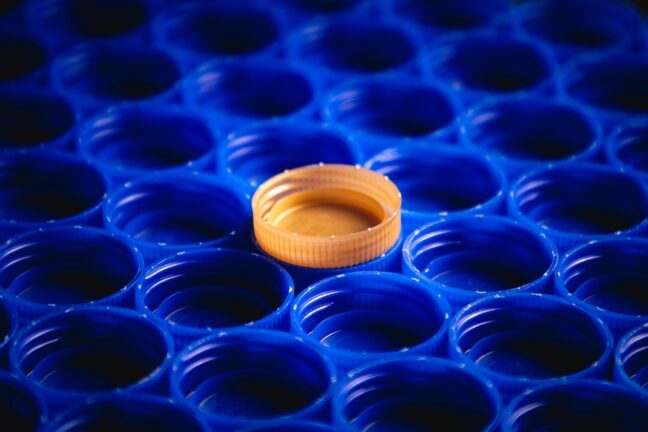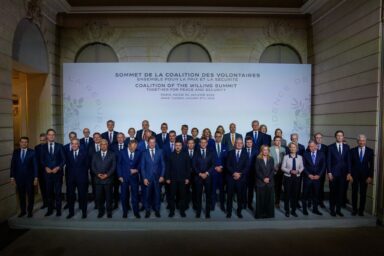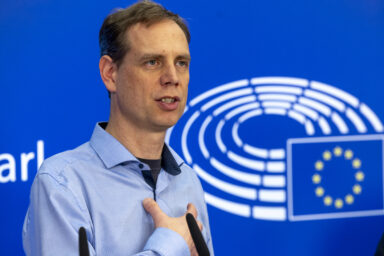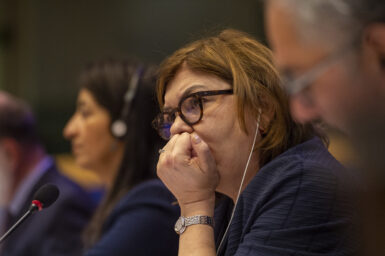In August 2024, German plastic recycler Epotech filed for insolvency. Three months later, Austrian Bage Plastics GmbH declared bankruptcy. In the Netherlands, seven plastic-recycling companies closed their doors in 2024. “The sector is at a breaking point,” Plastics Recyclers Europe (PRE) warns. As the world is drowning in cheap new plastic, recycling in Europe is rapidly becoming economically unviable.
The EU’s Packaging and Packaging Waste Regulation (PPWR) entered into force earlier this year, aiming to reduce packaging waste, improve recyclability, and promote reuse across all Member States. It includes incrementally cutting packaging waste per capita (by 5 per cent by 2030, 10 per cent by 2035, and 15 per cent by 2040) and phasing out certain single-use packaging, while ensuring all packaging is recyclable by 2030.
But PRE fears that target is becoming increasingly unrealistic. Since 2023, recycling facilities with a combined capacity of over 600,000 metric tons have shut down. Projections for 2025 indicate that closures could reach another 380,000 metric tons this year alone, which PRE attributes to a lack of policy support and steady investment.
Virgin plastic
A key driver is the falling price of virgin plastic. Over the past few years, China and the United States have significantly ramped up production, building massive new plastic facilities. As a result, there’s an enormous global influx of ultra-cheap plastic, with which European recyclers, already operating on thin margins, simply cannot compete. Recycled plastic is much more expensive than virgin plastic, largely because fossil fuels, particularly oil and gas, remain cheap. “We were told there was a business case for the energy transition,” Dutch recycling company Umincorp said in an interview with Dutch business magazine Quote. “But right now, the economics simply don’t work.”
As a result, warehouses are filled with recyclate that cannot be sold, and many recyclers have halted investment or shut down entirely. That means more plastic will be burned rather than recycled, releasing further CO₂ and threatening the EU’s climate ambitions.
You might be interested
Plastic levy
In 2021, the EU introduced a plastic levy to push Member States to reduce non-recycled plastic packaging. Under the current rules, countries must pay €800 per tonne of unrecycled plastic waste—soon to increase to €1,000 under the EU’s new multi-year budget under the “own resources” tab.
But the effect of this levy on the industry depends on national implementation. The Netherlands, for instance, chose to pay this levy to Brussels from general tax revenue. This means Dutch citizens now collectively pay around €240 million a year, or roughly €14 per person, regardless of their individual plastic use or recycling habits.This approach protects polluters, manufacturers, retailers, and waste processors, from financial accountability.
Germany, by contrast, plans to pass the levy directly to plastic producers and distributors starting in 2025. This move could trigger the kind of market correction European recyclers desperately need. If virgin plastic is no longer the cheapest option, recyclate can become more viable.
A flood of cheap imports
However, global market dynamics also play an important role. According to PRE, more than 20 per cent of the EU’s polymer consumption now comes from imported virgin and recycled plastics. At the same time, domestic recycling production amounts to a mere 5 per cent for most polymers.
While Europe’s recycling infrastructure contracts, consumption keeps rising. And the gap is being filled by foreign suppliers, many of whom operate under looser environmental rules.
Outside Europe, most countries have no recycled content mandates. In China, for example, recycled plastics are even banned from usage in food and beverage packaging. That means plastic waste has virtually no market value locally and ends up in Europe, often in the form of cheap “recycled” polymers.
Seven years ago, China banned imports of plastic waste. Now it exports that same waste back to Europe, turning the EU into “China’s trash can,” according to PRE. These imports undercut domestic recyclers, damage EU competitiveness, and threaten the credibility of the Green Deal.
While there are some anti-dumping measures in place, such as on PET imports from China, they remain narrow in scope and fail to address the broader market distortion. As things stand, the EU’s open market is flooded with artificially low-priced plastic.
Exports ban
Legal plastic waste exports from the EU are still allowed, for now. That’s set to change in 2026, when the new Waste Shipment Regulation (WSR) will ban plastic waste exports to non-OECD countries. That legislation was introduced to prevent infamous stories about “plastic soups” in countries like Vietnam and Indonesia. In theory, this is a win for environmental justice. But in practice, it is likely that more plastic will remain in Europe. Without a viable recycling industry, more plastic will likely be incinerated.
Earlier this year, Sophie Sicard, president of the European Recycling Industries Confederation (Euric), urged the EU to introduce emergency financing to save what’s left of the sector. She also called for urgent action against plastic dumping. Industry group Plastics Europe echoed that call for swift action by the EU. According to them, key to solving the issue is levelling the playing field by introducing customs codes and traceability for both virgin and recycled plastics to avoid circular materials being placed at a structural disadvantage, as well as harmonised EU rules. Fragmented national regulations are deterring investment. A unified EU-wide framework for end-of-waste criteria and quality standards is critical.
As industry voice Arnol Craigh put it: “This is not a call for protectionism, it is a call for coherence. Policymakers must now act with urgency and clarity. Europe’s circular economy cannot be built on imported plastic.”











